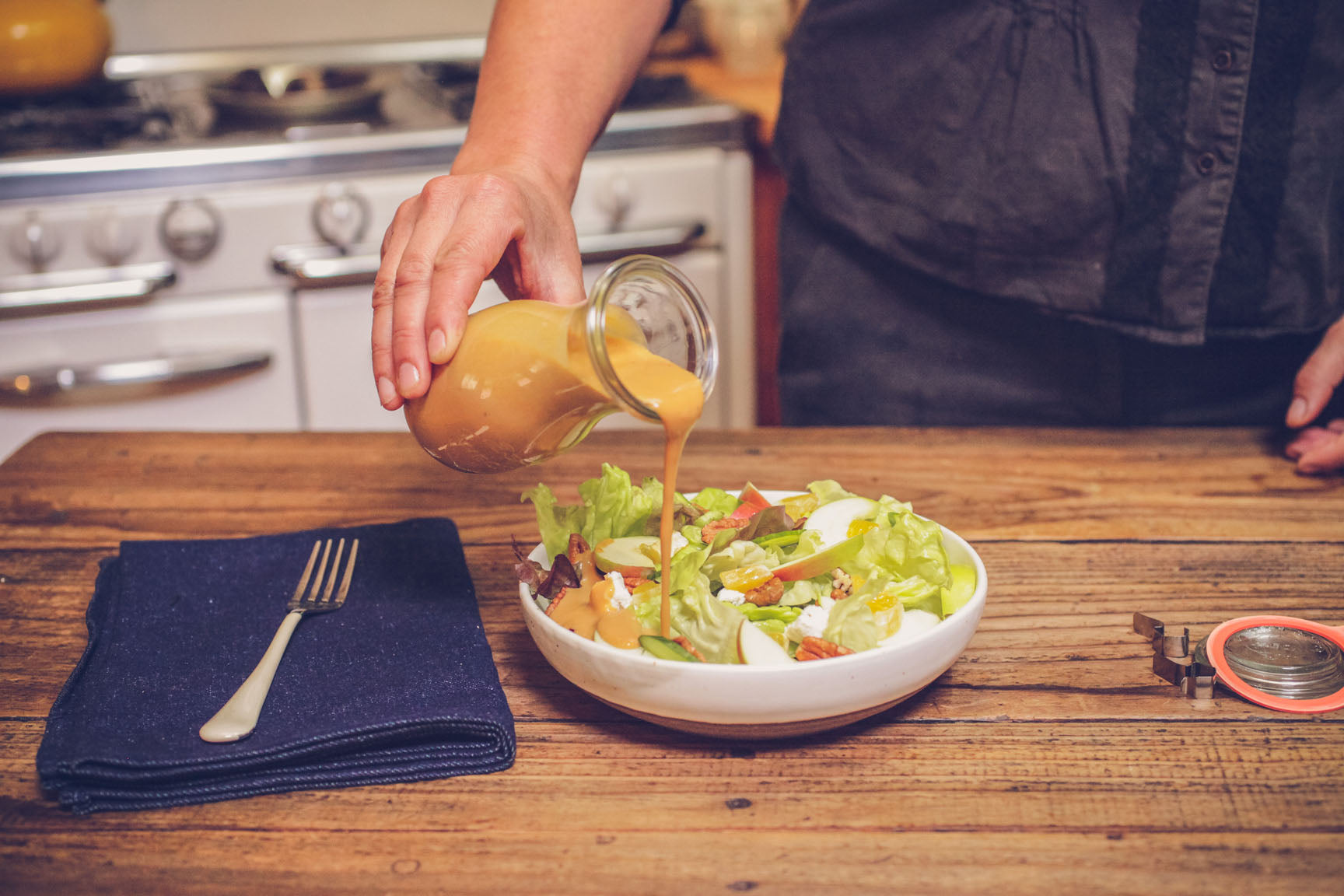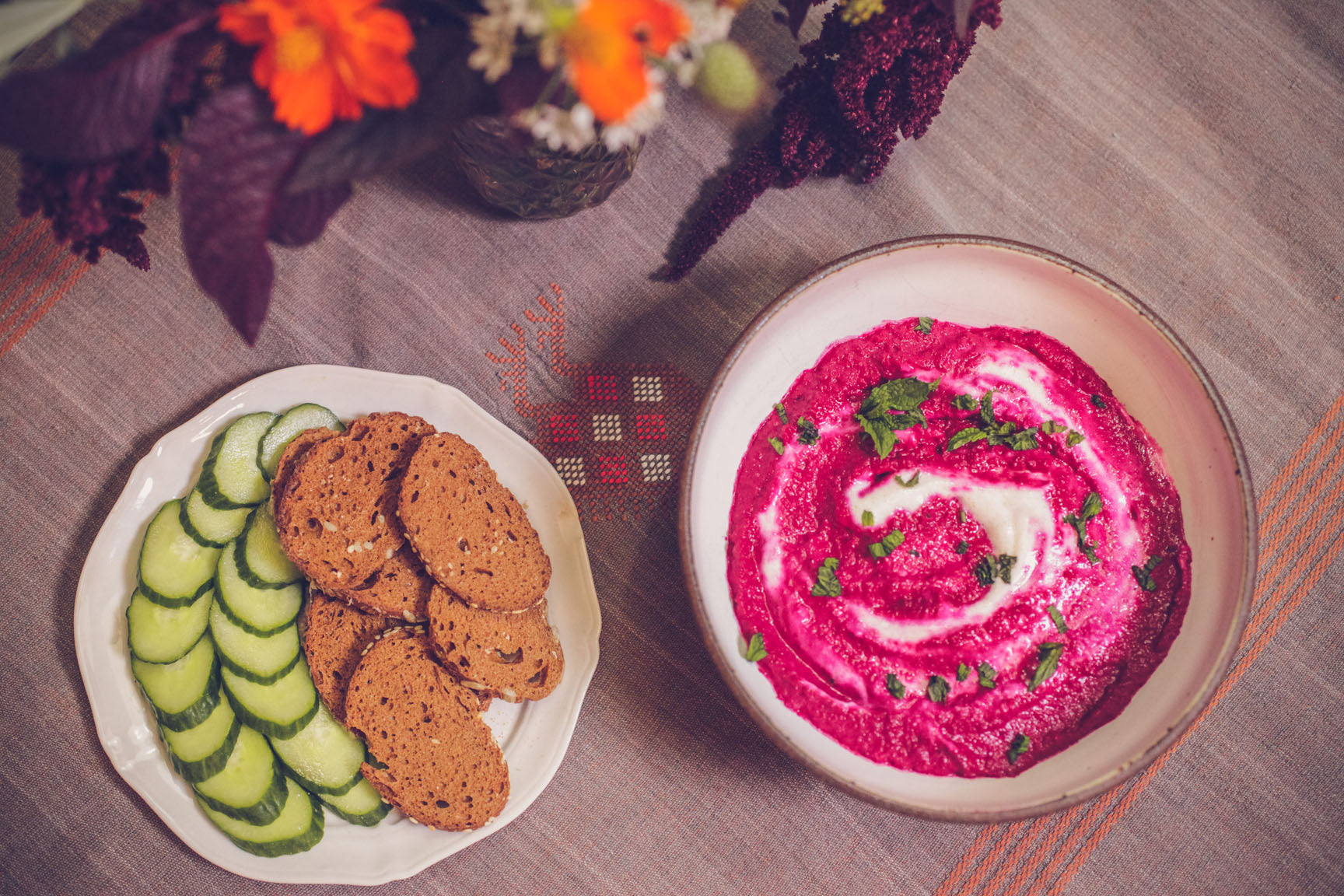- Continue Shopping
- Your Cart is Empty
October Journal 2018: Hip and Haw, Salt and Flower

owIN THIS MONTH'S JOURNAL...
- Rose Hip Dressing
- Roasted Beet Hummus
- ras el Hanout
- Roasted Winter Squash with Green Sauce Yogurt and Walnuts
- Salt and Lavender Scrub
- Garden Notes
- Workshops & Events
Introduction
Is this the best season, or what? Do we say that every month? Oh, but October is a contender, the best of summer and fall combined, entwined, like the rough green stems of a squash vine, tangled with the last of the summer flowers and seedheads. Rambling rose hips, orange as October sunsets, dried wands of lavender blooms, the brilliant golden flesh of roasted winter squash. Salt and seed, leaves and flowers, change of season, change of sun. Gray clouds gather, sunset slants, the dry grass rustles. It’s autumn, brushing through the leaves of tall crops, weaving like wind through the treetops, scudding great-bellied across the sky.
In the forest, the wild roses have finished their bloom, and their pink petals paled and fallen to the duff. From the spray of stamens that were visited by bees, small seeds swell encased in red-orange, leathery pods; the hips, the haws, the heart, the future. Though we more often find our rose hips in the gleaming glass jars of the bulk section, we like to imagine the bright haws on the spurred vines, gleaming against a floor of fallen maple leaves, mushrooms, rich duff. An ancient food, beloved of bird and mammal alike, rose hips are known for their high vitamin C content and their concentrated flavor, that hovers somewhere between dried fruit and the flowers they used to be. We blend them here to make a simple salad dressing, richer than the sum of its ingredients.
Rose Hip Dressing
This next recipe contains no flowers, yet its color is as bright as a blooming rose. The spice blend that makes it sing is ras el hanout, which translates to “front of house”. In Middle Eastern markets, each spice shop makes its own unique blend, to showcase the best of the spices their store has to offer. Usually based around coriander, cumin, cardamon, and other warming spices, the spices are at once floral and fragrant, warm and spicy. We like to dip young sliced cucumbers into the brilliant, nutty, beautiful beet hummus.
Roasted Beet Hummus
We don’t run a spice stall in the Middle East. And the only one of these seeds that we reliably grow is coriander. But we loved the Ras El Hanout spice blend that we used in the hummus so much, we decided to make our own.
Ras El Hanout
Sheet pan meals are great for…well, I was going to say for this time of year. But really, there’s not a bad time for them. Generous pours of olive oil, some simple slicing, and the bulk of the meal is done. It’s the simple sauces that really make the presentation, though. And what is better than one vibrant sauce, drizzled over succulent roasted veg? Two vibrant sauces. And walnuts.
Roasted Winter Squash with Green Sauce Yogurt & Walnuts
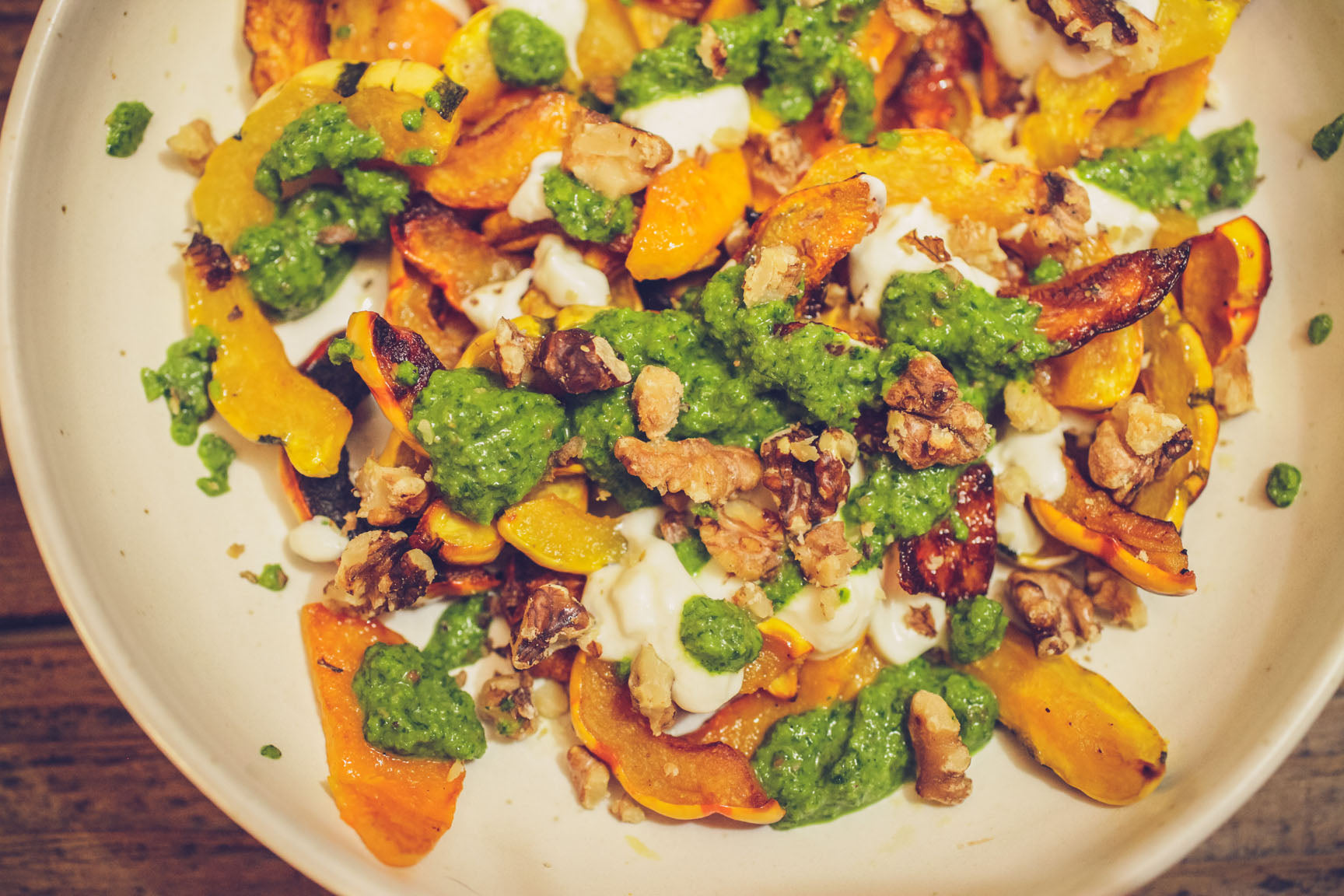
Here’s some flower trivia for ya. The Latin root of the word lavender comes from lavar, meaning “to wash.” Lavender has been used as a bath herb for centuries and no wonder. The flower has a wonderful aromatherapeutic aroma, that is known to reduce stress and relieve tension. It is also full of potent herbal antimicrobial compounds. We made this simple, soothing bath scrub with lavender, just for you. Because we could probably all stand a little soothing, now and then.
Lavender Salt Scrub
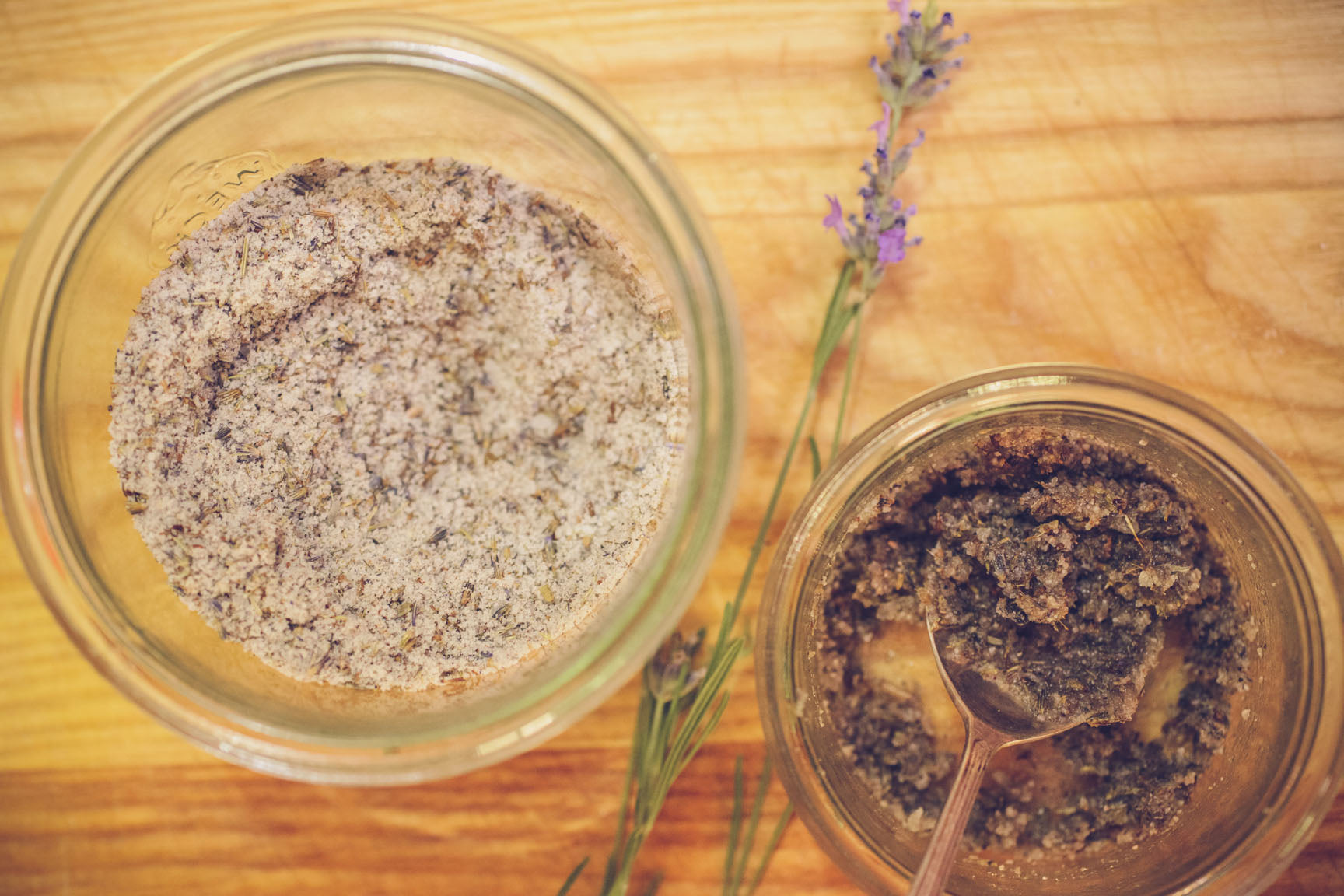
We cut back the lavender in the demo garden a while ago, and the great old rose vine near the front entry, Cecil Brunner. The lavender is behaving nicely. But Cecile just took that great cutback in stride and is pushing out so many new vines, that if we let her go on, she’d soon be larger than before. Tomatoes are still ripening. Planted pea seeds and kale starts, getting started with the cool season crops.
Garden Notes
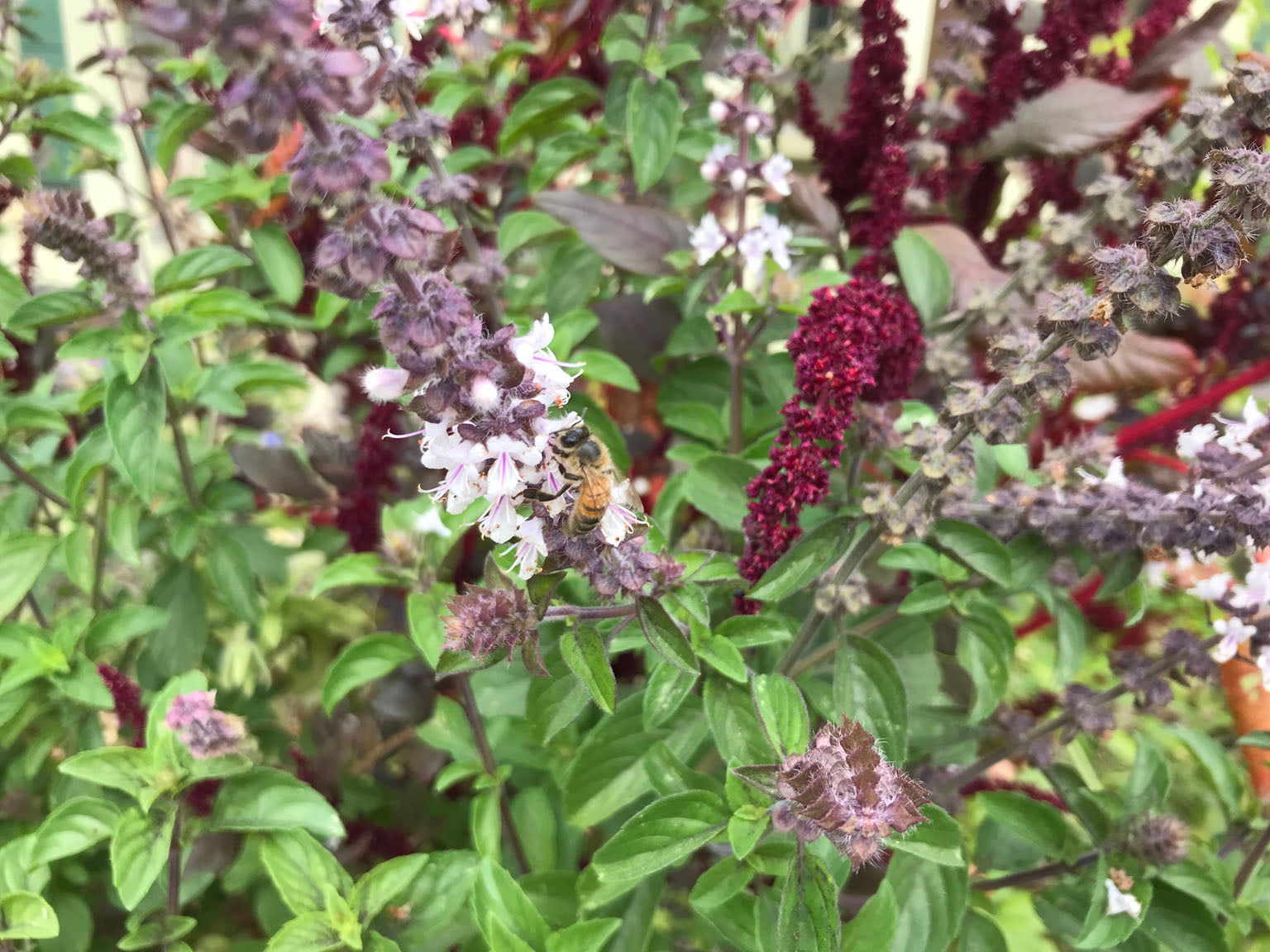
Workshops & Events
We have a good full roster of events for the month of October. First off is is a hard cider class, here at the store, on October 6th. This is part of our series Bringing The Harvest Home, a collaboration with the Santa Cruz Farmer's Markets. Participants will get a 20 pounds of apples, a gallon carboy, yeast and an airlock and musting cap, as well as a thorough briefing from everything from picking and pressing apples, to fermentation, carbonation, bottling, and more. This class should be lively and engaging, a solid base of knowledge for beginning and intermediate cider makers.
Next up, it's time to get spicy! October 20 is our Fermented Hot Pepper class, also held at Mountain Feed. We'll walk through the basics of vegetable fermentation, particularly as it applies to peppers, which can have a higher sugar content than other vegetables. Then we'll learn about some different methods to blend up fermented peppers into probiotic hot sauces and explore various ways to store and stabilize the resulting jars of fiery goodness. Fermented hot sauce makes a wonderful gift in a few months, so now is a great time to get started fermenting peppers not just for yourself, but friends and family as well.
Finally, rounding out a month of excellent inspirational and educational offerings, we have our final class of the year at the Felton Farmer's Market on October 23rd. It's bittersweet to see the season come to an end, but we will console ourselves with a bubbling swig of probiotic, non-alcoholic Pumpkin Beer. Made with a spiced pumpkin syrup and our fermented friend the ginger bug, we'll explore how to make both syrup and probiotic ginger bug starter, and bottle up some sparkling seasonal pumpkin brew, right there at the market. Class is FREE, and participants in the demo get a written recipe as well discount coupons for Mountain Feed. Come show your support for the farmers, the market, and of course, those seasonal winter squash. It's Pumpkin Day at the Felton Market, so in addition to the class, there will be great deals on squash, as well as face painting, pumpkin decoration, and live music. A family event for kids of all ages.

No matter where you find us, we look forward to seeing you soon. Fall is sweet and fleeting in the Santa Cruz mountains. May your days be golden as maple leaves, pumpkin flesh, and sunflower petals.
This journal and the articles in it were written by Jessica Tunis, unless otherwise noted.

